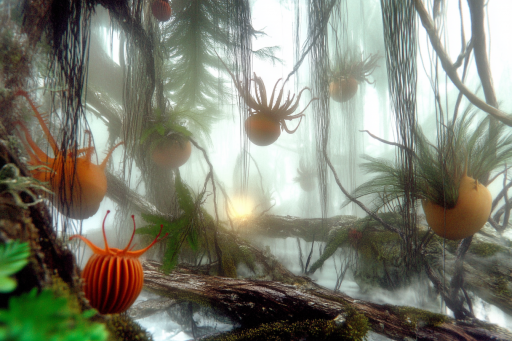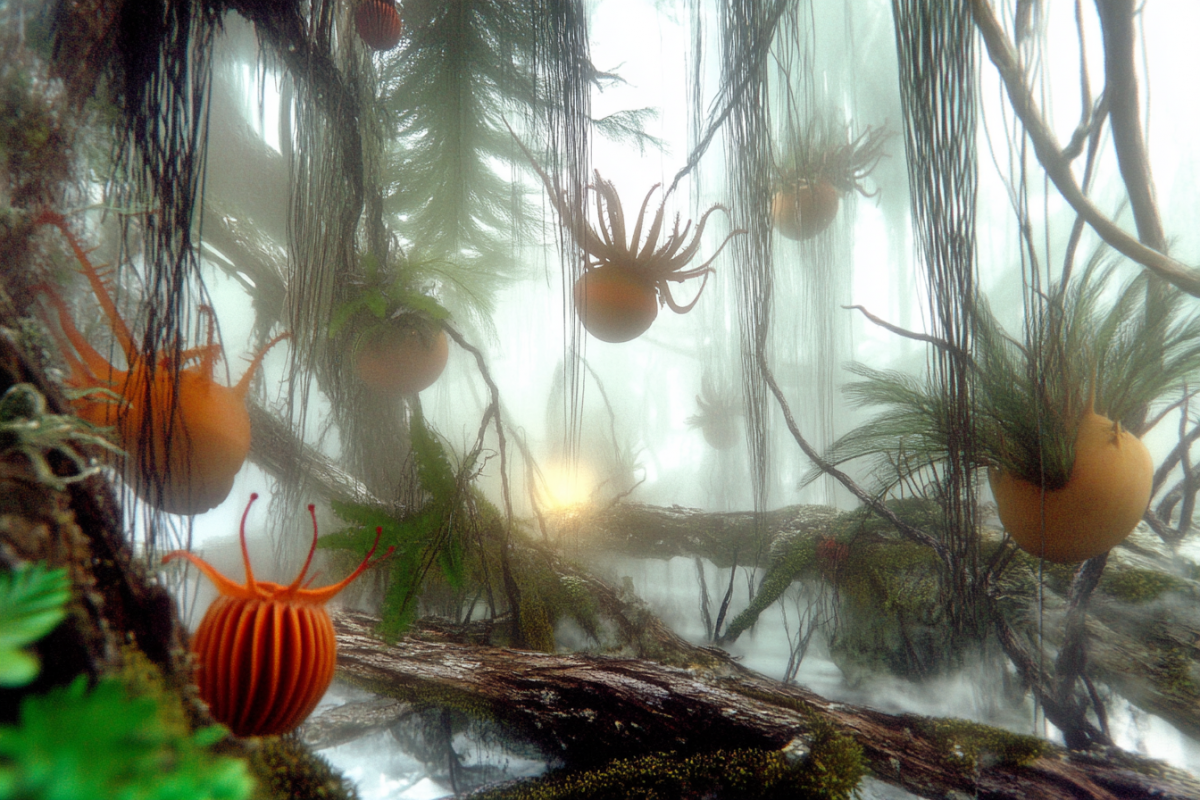
Plants may seem like passive organisms, but some species behave in ways that defy logic—almost as if they have a mind of their own. From carnivorous plants that lure and trap their prey to vines that “hunt” for their next target, these freaky species challenge everything we thought we knew about the plant kingdom. Some can move, others communicate, and a few even appear to make decisions. These strange and intelligent plants will make you question whether nature is watching us more closely than we realize.
The Corpse Flower – The World’s Stinkiest Plant

The Titan Arum, also known as the Corpse Flower, emits a revolting smell of rotting flesh when it blooms. This horrifying scent isn’t just for show—it’s designed to attract flies and beetles that act as pollinators. Even stranger, the plant heats up to make the smell travel farther, ensuring that insects from miles away pick up the scent. This massive, alien-like flower seems to have perfected the art of deception.
The Dancing Plant – A Shrub That Reacts to Music

Mimosa pudica, also called the Dancing Plant, reacts dramatically to touch, vibration, and even sound. Its leaves fold inwards when disturbed, almost as if it’s recoiling in fear. Some researchers believe this response deters herbivores by making the plant appear wilted or poisonous. In experiments, its leaves have even moved in response to rhythmic music, leading to theories that plants may sense vibrations in a way we don’t yet understand.
The Ghost Plant – A Flower That Lives Without Sunlight

The Ghost Plant (Monotropa uniflora) looks like something from a haunted forest. Unlike normal plants, it lacks chlorophyll, meaning it doesn’t rely on photosynthesis to survive. Instead, it feeds off fungi connected to tree roots, stealing nutrients like a parasite. Its eerie, translucent white stems and drooping flowers make it look like a supernatural entity lurking in the shadows.
The Sensitive Plant – A Shrub with a Nervous System-Like Response

The Sensitive Plant (Mimosa pudica) has one of the fastest reactions in the plant world. The moment its leaves are touched, they snap shut within seconds, giving the illusion that the plant is recoiling from harm. This freaky defense mechanism helps it avoid being eaten by insects and grazing animals. Some scientists believe this movement involves electrical signals, similar to how nerves work in animals.
The Corpse Lily – A Parasitic Giant That Smells Like Death

The Rafflesia arnoldii, or Corpse Lily, is another plant that smells like rotting flesh to attract flies. What makes it even creepier is that it has no roots, stems, or leaves—it exists entirely as a parasite, living inside host vines until it bursts out with a massive, alien-like flower. This giant bloom, one of the largest in the world, can reach three feet across, and its disturbing scent can travel for miles.
The Strangler Fig – A Tree That Kills Its Host

The Strangler Fig starts life as a harmless seed, but it soon becomes a silent killer. It grows around a host tree, wrapping its roots tightly until it chokes the life out of its host. Over time, the host tree dies and rots away, leaving behind a hollowed-out structure made entirely of the fig’s tangled vines. It’s a slow but methodical form of plant assassination.
The Vampire Vine – A Plant That Hunts Its Prey

The Dodder Vine, sometimes called the Vampire Plant, doesn’t just grow randomly—it actually sniffs out its favorite host plants. Once it finds a good target, it wraps around the plant and drains nutrients directly from its stem, eventually sapping its victim dry. Scientists have found that the Dodder Vine can even choose between different plants, suggesting it has some form of decision-making ability.
The Telegraph Plant – A Shrub That Moves on Its Own

Unlike most plants, the Telegraph Plant (Codariocalyx motorius) doesn’t just react to touch—it moves continuously. Its small leaves rotate and twitch throughout the day, adjusting to light and vibrations. Some researchers believe it evolved this motion to attract pollinators or confuse predators. Its rapid movements make it look almost like it’s dancing, giving it an eerie, intelligent quality.
The Venus Flytrap – A Plant That Hunts Like an Animal

One of the most famous carnivorous plants, the Venus Flytrap, doesn’t just passively wait for prey—it senses movement and strikes with precision. When an insect touches its trigger hairs, the trap snaps shut in less than a second, sealing the victim inside. It then releases digestive enzymes to dissolve its prey and absorb nutrients. This incredible timing suggests the plant has a complex internal mechanism, almost like a brain.
The Corpse Plant – A Flower That Mimics Rotting Meat

The Hydnora africana is a bizarre underground plant that only emerges to release its foul-smelling bloom, which looks like decaying flesh. The plant remains hidden beneath the soil most of its life, surviving as a parasite on other plants. When it finally blooms, it attracts insects that crawl inside—only to trap them temporarily until pollination is complete. This freaky plant plays a twisted game of deception.
The Walking Palm – A Tree That “Moves” Across the Forest

The Walking Palm (Socratea exorrhiza) seems to have a mind of its own—it gradually shifts its position by growing new roots in different directions. Over time, these roots allow the tree to “walk” towards better sunlight, sometimes moving several feet per year. Some scientists question whether it truly moves, but the way its roots form suggests a plant adapting to its environment in an eerie way.
The Cobra Lily – A Plant That Traps and Confuses Its Prey

The Cobra Lily (Darlingtonia californica) looks like a rearing snake, with hooded, tube-like leaves that lure insects inside. Once a bug enters, it gets trapped in a maze of slippery surfaces and hidden exits, becoming completely disoriented. By the time the insect finds a way out, it’s too late—it has already dropped into the digestive chamber, where the plant slowly dissolves its meal.
The Suicide Palm – A Tree That Blooms Itself to Death

The Tahina spectabilis, also known as the Suicide Palm, has one of the most unsettling life cycles in the plant world. It remains unnoticed for most of its life, growing silently in the remote forests of Madagascar. But when it finally reaches maturity, it produces a massive, explosive bloom, using up all its stored energy in one final act. After this dramatic flowering event, the tree wilts and dies, leaving behind its seeds as its only legacy.
Do Plants Know More Than We Think

These plants challenge everything we thought we knew about the natural world. Some seem to move with purpose, while others manipulate their surroundings in ways that feel almost intelligent. Science is still unraveling the secrets of plant behavior, but one thing is certain—nature is far more mysterious than we ever imagined. If plants can communicate, hunt, and adapt like this, what else might they be capable of?





